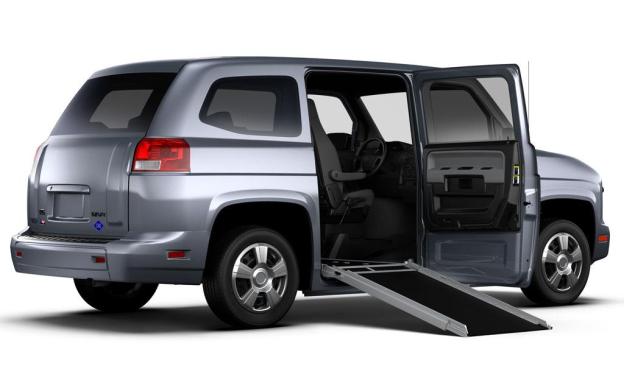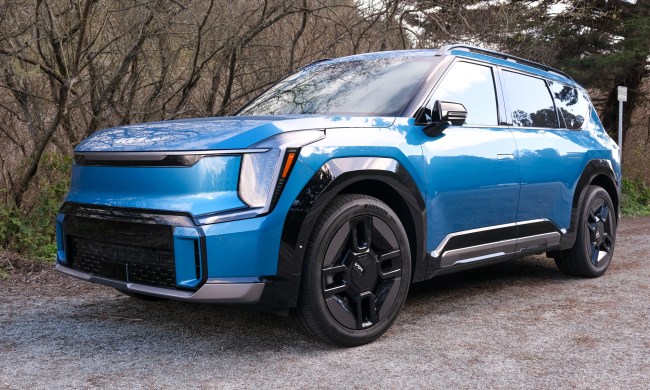 Car salesman like to talk about the “freedom” of driving, the ability to go wherever you want, whenever you want, that is still the car’s most appealing feature. For some people, getting into a car requires a lot more than opening a door. Even with specially converted vehicles, people in wheelchairs have a lot of difficulty getting around. There has never been a car designed with their needs in mind. Vehicle Production Group (VPG) hopes to change that with their MV-1 van.
Car salesman like to talk about the “freedom” of driving, the ability to go wherever you want, whenever you want, that is still the car’s most appealing feature. For some people, getting into a car requires a lot more than opening a door. Even with specially converted vehicles, people in wheelchairs have a lot of difficulty getting around. There has never been a car designed with their needs in mind. Vehicle Production Group (VPG) hopes to change that with their MV-1 van.
Since it was built from the ground-up to accommodate disabled people, VPG says it is much more comfortable than existing vehicles. The wheelchair ramp deploys from the passenger’s side rear door; most conversion vans have the ramp in the tailgate. This allows passengers to get in the van from the side, like everyone else, instead of being winched into the back like a palette of freight.
Wheelchair-bound passengers are at the center of the MV-1, literally. They ride in the middle row and passenger’s seat, which gives the MV-1 a more spacious interior, and a wider wheelchair turning circle for better entrance and egress. In addition, the floor is covered with an anti-skid coating. VPG did not say whether they planned to make a version with hand controls. There is also a third row with three conventional seats.
VPG says the MV-1 is “built like a truck, yet drives like a car.” With its body-on-frame construction and self-leveling suspension, it should be pretty durable, although that separate frame may add a bit of weight. The MV-1 is powered by a 4.6-liter Ford gasoline V8, but VPG is also selling a model powered by Compressed Natural Gas (CNG).
VPG sees the MV-1 primarily as a commercial vehicle for paratransit fleets, taxi companies, and livery services. The van has already been approved as a taxi in New York and Philadelphia. New York’s new “Taxi of Tomorrow” needs to be modified for wheelchair accessibility. The MV-1 is currently in production at the former Hummer plant in Mishawaka, Indiana. It starts at $39,950 and comes with a 3-year/36,000-mile bumper-bumper warranty.
VPG’s magic bus definitely serves a need; cities like New York require a certain number of taxis to be Americans with Disabilities Act (ADA)-compliant, and paratransit operations are very important in rural areas that lack mass transit options. However, VPG’s startup status may be an issue. The MV-1 does share major components, like its engine, with mass-market models, but a lot of it is bespoke. If an MV-1 gets in an accident, it will be harder to get replace doors or fenders than if the wrecked vehicle was a Ford or Toyota. Still, the MV-1 was designed to address the needs of people who are often ignored, and for that reason alone it deserves to be successful.


